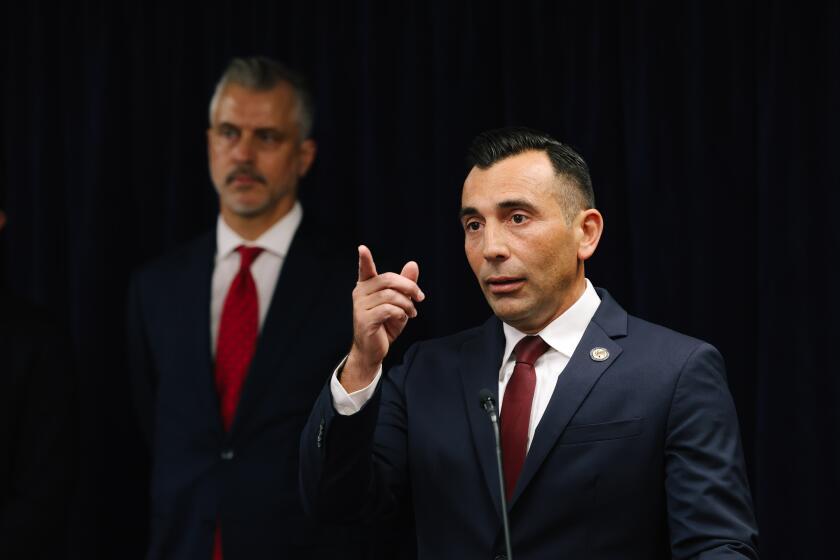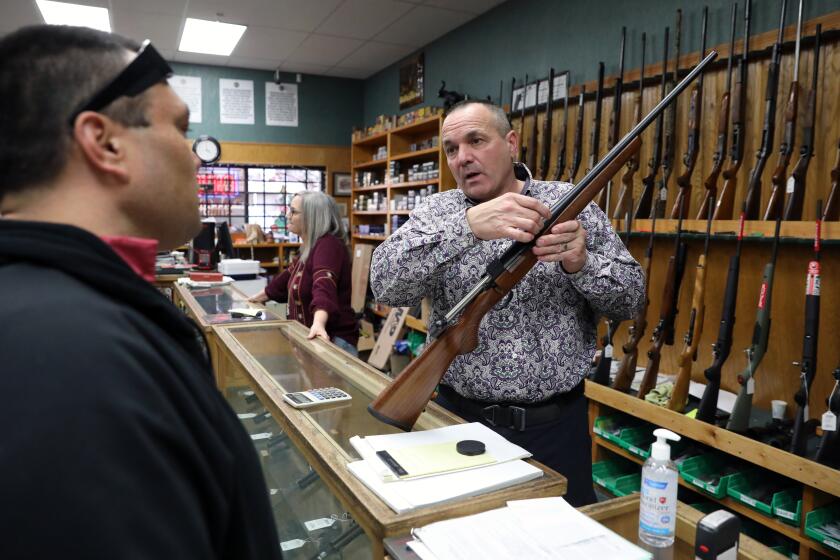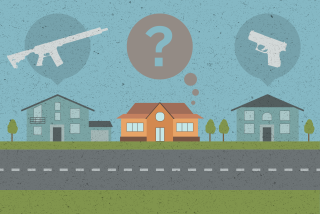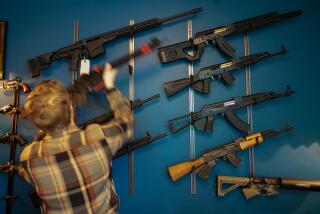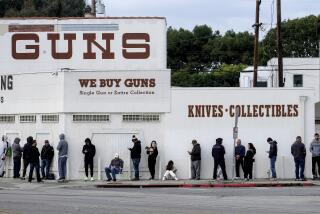L.A. County offers free gun locks in an effort to decrease firearm violence
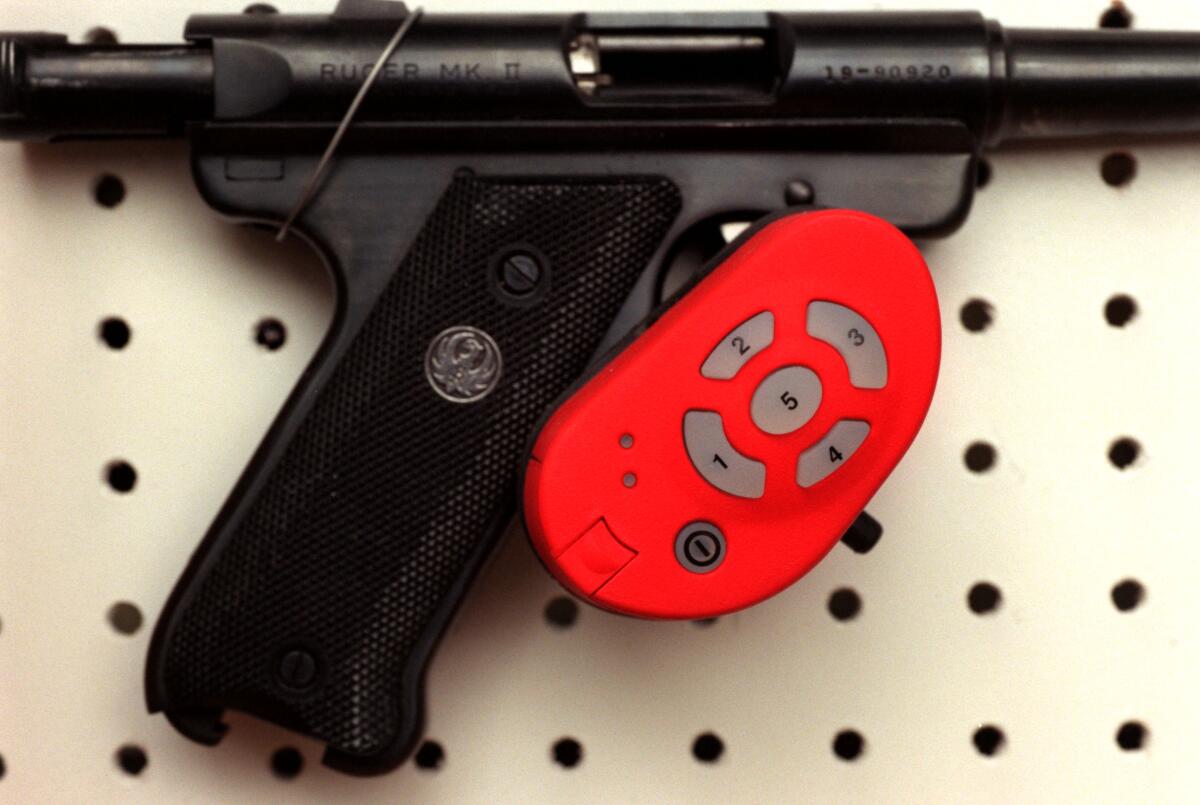
- Share via
Survivors of gun violence gathered at a news conference at the Rancho Los Amigos National Rehabilitation Center on Tuesday morning to share one message: It is preventable.
To that end, Los Angeles County public health officials announced that the county is offering free gun safety locks to residents. Designed for use on unloaded weapons, gun locks cover the trigger and require a key or combination to open.
Addressing a small crowd, L.A. County Public Health Director Barbara Ferrer said, “In Los Angeles County, a child is killed or injured by gun violence every 30 hours.”
“In 2022, more than 300 residents in L.A. County died by gun suicide, and 510 residents died after being shot by someone with a gun,” Ferrer said.
Ferrer went on to say that too many families have experienced the pain of losing a child, parent or sibling because guns were “readily available in the home, loaded and unlocked.”
Operation Safe Cities was born out of frustration with violent criminals carrying out brazen robberies with firearms and will focus on bringing harsher penalties against repeat offenders.
To reduce the accessibility of guns at home, the county public health department’s Office of Violence Prevention is making 60,000 gun locks free to residents, no questions asked.
The locks can be ordered through the county’s gun safety website and received by mail or picked up at any of these county medical facilities:
- Harbor-UCLA Medical Center in Torrance
- High Desert Regional Health Center in Lancaster
- Los Angeles General Medical Center near downtown L.A.
- Martin Luther King Jr. Outpatient Center in Willowbrook
- Olive View-UCLA Medical Center in Sylmar
- Rancho Los Amigos National Rehabilitation Center in Downey
The pickup locations will expand to county libraries toward the end of the year.
What distinguishes the county’s initiative from state and federal efforts to reduce gun violence is its focus on the accessibility of guns in the home.
In 2020, the National Shooting Sports Foundation estimated that 433.9 million firearms are in civilians’ possession.
More than 10% of households in L.A. County report having a gun, and many of those are likely to have children, according to the Los Angeles County Department of Public Health.
Children may not understand the dangers associated with having firearms in their homes, so securing the weapons is a proven approach to reducing accidental injury and death, said Shannon Thyne, director of pediatrics for the county’s Department of Health Services.
“Locked firearms decrease self-inflicted injuries from firearms by 78% and reduce unintentional firearm injuries by 85%,” Thyne said.
Mia Livas Porter said she didn’t think she was a survivor of gun violence, let alone someone who should be sharing her story in an effort to demand change. But when she began volunteering for Moms Demand Action six years ago, she realized that she fit the definition of a survivor because her brother died by gun suicide more than 30 years ago.
She felt a responsibility to raise awareness by sharing her story and urging others to prevent gun violence by asking friends and family who own firearms what safety measures they’re taking at home.
The Shasta County Board of Supervisors voted to allow guns in local government buildings, defying law.
Familiar with the lasting affects of gun violence, Michael Scott, chair of the Physical Medicine & Rehabilitation Department at Rancho Los Amigos, said the vast majority of individuals survive but are left with significant life-changing disabilities.
Survivors go to rehabilitation centers such as Rancho Los Amigos for spinal cord, brain or orthopedic injuries caused by a gunshot blast.
“These injuries can be devastating, resulting in paralysis of the arms and legs, cognitive impairment, loss of bowel and bladder control and sometimes the inability to breathe on their own, requiring an individual to be on a ventilator for life,” Scott said.
Aside from physical injuries, he said, there’s also an emotional and mental-health toll on both the patient and family.
Scott has seen rehabilitated survivors overcome their injuries and return to the workforce. Yet he’s still asked whether there are any new ways to treat spinal cord injuries or paralysis caused by gun violence.
“Unfortunately, although we’ve made advances in neurological recovery and rehabilitation, the damage done by a gunshot blast to the spinal cord is extensive and we still don’t have a way to fix it,” Scott said. “So that being the case, our best chance at managing this condition is to prevent unintentional firearm injuries from happening in the first place.”
More to Read
Sign up for Essential California
The most important California stories and recommendations in your inbox every morning.
You may occasionally receive promotional content from the Los Angeles Times.
